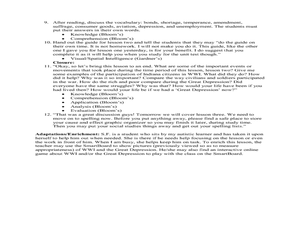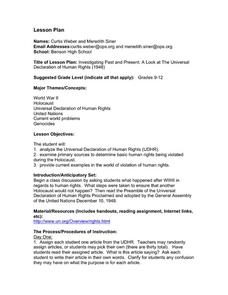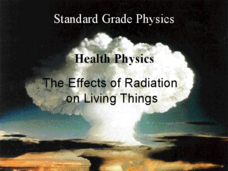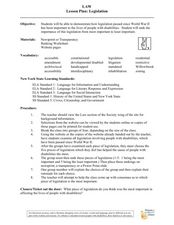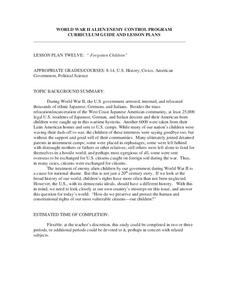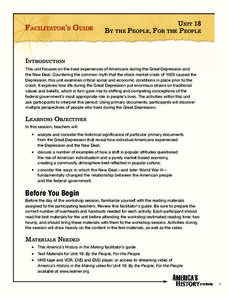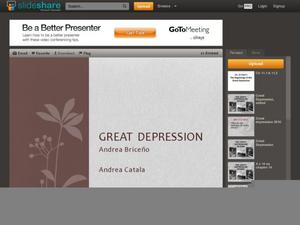Core Knowledge Foundation
Volume 2 - A History of the United States: Modern Times—Late 1800s to the 2000s
The second volume of the Core Knowledge History of the United States ebook begins by asking young scholars to consider the impact immigration, industrialization, and urbanization had on the United States in the late 1800s. The text ends...
Curated OER
WWI & Depression
Fourth graders describe WWI influence in Indiana. In this guided reading instructional activity students read about the participation of Indiana citizens during World War I. Students give examples of event that changed life in Indiana...
Curated OER
Investigating Past and Present: A Look at The Universal Declaration of Human Rights
Students compare the Universal Declaration of Human Rights to the war crimes of WWII. In this lesson on Human Rights, students evaluate the causes of WWII, war crimes, and determine whether the outcome might have been different otherwise.
The New York Times
The Cold War: Crossword
This crossword puzzle focuses on clues related to The Cold War. It also has unrelated clues that would be a challenge to middle schoolers, but should be manageable to secondary students; particularly juniors taking US history. There are...
Curated OER
United States - Japanese Relations In Post World War II Era
Ninth graders explore the relationship between the United States and Japan. In groups, classmates research the treatment of Koreans and Americans as prisoners of war. Pupils examine the effect of politics and agreements during the war....
Curated OER
Health Physics: The Effects of Radiation on Living Things
A mix of scientific details and background information about the well-known sites of radiation attacks or accidents. This topic may open up details that you may consider as sensitive, and could be upsetting to some pupils. This is a...
Curated OER
Teaching About Genocide
Teaching children of any age about genocide or The Holocaust can be difficult, as the content is sensitive and often emotional. This academic article was written by an educator and is intended to help you consider multiple aspects of...
Curated OER
Attu Battlefield: U.S. Army and Navy Airfields on Attu
Students use maps, readings, drawings and photos to research the World War II Battle of Attu. They explain the importance of the battle, discuss the valor and loyalty of both American and Japanese troops and analyze sources of historical...
Curated OER
Selling Warfare - Propaganda Posters
Students examine the use and purpose of propaganda posters during World War I. They work in groups to create a propaganda poster supporting a nation's war effort.
Curated OER
Cold War
Eleventh graders demonstrate their knowledge of the causes and effects of the Cold War.
Curated OER
The Vietnam War
Students analyze U.S. involvement in Vietnam. In this Vietnam War lesson, students listen to their instructor present lectures regarding the Cold War as well as the conflict in Vietnam. Students study U.S. involvement in the armed...
Curated OER
A Day of Infamy:Analyzing FDR’s Pearl Harbor Address
In 1941 FDR spoke out on the events at Pearl Harbor. The class will get to analyze word choice, word meaning, author's craft and structure by analyzing an actual draft of this speech. They will look critically at the words used,...
K12 Reader
Churchill's Speech: We Shall Fight on the Beaches
Winston Churchill speech delivered to the House of Commons on June 4, 1940, is the focus of a comprehension exercise that asks readers to explain how the repetition in the speech supports the main purpose of Churchill's address.
Prestwick House
A Separate Peace
John Knowles' A Separate Peace is the subject of a literary crossword puzzle that asks readers to identify key events and characters in this coming-of-age story.
Curated OER
Language Arts: Novel Guides
Learners discuss the Revolution and consider the causes of the war, the attitudes of the colonists, and the position of the British. Then students explore American involvement in wars since the country's inception.
Curated OER
Children at War
Students examine human rights by taking a closer look at children in combat. In this human rights lesson, students discuss the reasons that children have been used to fight wars throughout history and today. Students analyze the...
Pearson
On the Road
Jack Kerouac's cult classic, On the Road, is the focus of this resource designed for teachers
Cave Creek Unified School District
Crusades and Culture in the Middle Ages
The Crusades sounds like a glamorous time period in the Middle Ages full of glory—but was it? Scholars find and review the truth of the Crusades' influence on the world through the resource. The study guides, separated individually by...
Curated OER
Propaganda of War
Students examine examples of war propaganda. In this historical literature lesson, students research the elements of propaganda in relation to various wars of the past. They discuss different types of propaganda, and the potential...
Curated OER
Legislation
Young scholars rank the legislation of disabilities since World War I and write their rationale for the ranking. For this legislation of disabilities lesson plan, students do this for 5 legislations that have been passed.
Curated OER
Remembering WWII Through Memorials
Learners create memorials for lesser known WWII heroes. In this WWII lesson, pupils recognize the efforts of lesser know individuals and groups that contributed to the wartime cause. Learners work in groups to create a memorial for one...
Curated OER
World War II Alien Enemy Control Program
Students become familiar with the concepts of human rights and constitutional rights. They have an increased awareness of the historical record as to the cessation of these rights, especially in regards to children during WWII. It is...
Annenberg Foundation
By the People, For the People
A picture speaks a thousand words—no matter how old. The 18th installment of a 22-part series on the making of American history has scholars research the causes of the Great Depression and the factors of the New Deal. Using photographic...
Curated OER
Great Depression
Examine the Great Depression with your pupils. First you'll discuss the causes of the Great Depression, such as the stock market crash of 1929. Then, you'll examine key facts, like the Dust Bowl, the New Deal, and economic recovery.



